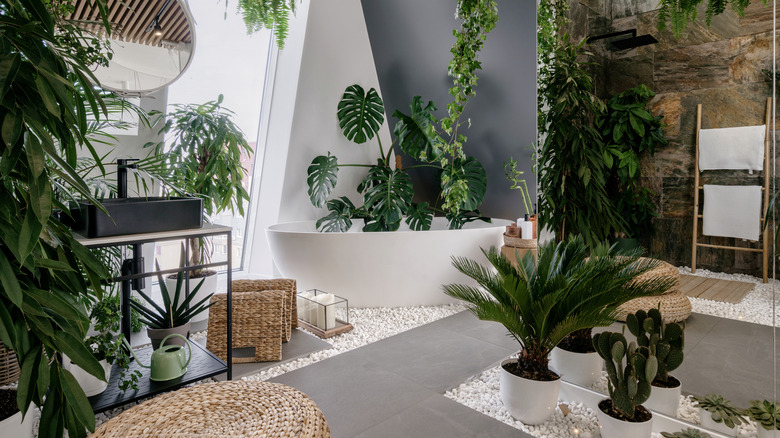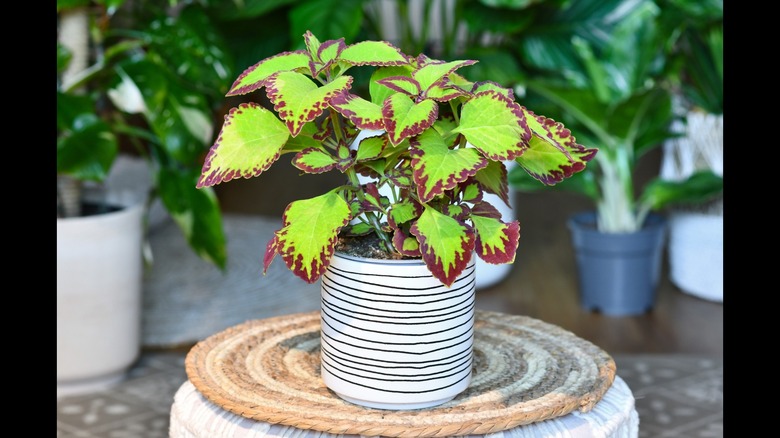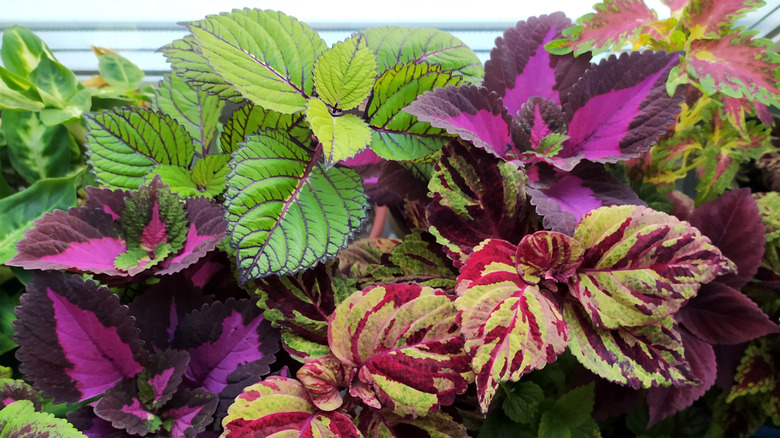Our Horticulturist Tells Us What Humidity-Loving Plant Will Give Your Bathroom A Pop Of Color
Coleus scutellarioides (syn. Solenostemon scutellarioides), commonly known as coleus plant or painted nettle, is a vibrant herbaceous subshrub belonging to the Lamiaceae family. It is known for its richly colored, variegated leaves and makes a striking addition to both indoor and outdoor spaces. Native to Southeast Asia and Australia, coleus plants do best in warm, humid environments. Although indoor plants can be placed in different rooms of your house — your bathroom could be the perfect place to cultivate this colorful species.
Coleus plant leaves are ovate to oblong with toothed margins, growing in pairs on 4-sided stems. Foliage colors range from green to red, rust, maroon, crimson, yellow, and pink. Although painted nettles produce small, blue-to-white nettle-like flowers in the summer and fall, this plant is primarily grown for its colorful, attractive foliage. Types of coleus plants can range between 1 and 3 feet tall, with either bushy or trailing growth habits. This popular, ornamental houseplant prefers rich, consistently moist, well-draining soil. To maintain compact, bushy growth, regularly pinch the stem tips and remove flower spikes before they seed.
Why do coleus plants love bathrooms?
Like many popular houseplants, painted nettles are native to subtropical and tropical climates, primarily in the wet tropical biome. In its native habitat, this species is typically found in monsoon forests, rainforests, and mesic to wet forests, as well as on streamsides and open areas. This means that the plant is adapted to grow in moderate to high humidity found in these areas. Although it is possible to raise the humidity in your home, choosing an already humid room is one of the best ways to ensure your coleus plant grows lush, healthy foliage. A bathroom not only offers optimum humidity but also creates the warm environment that these plants love.
In low humidity, painted nettle plants can become stressed. Typical symptoms include browning or crispy leaves, particularly on the tips and edges. The plant may also droop and lose its characteristic shine and luster. Ensure the humid environment is well-ventilated and avoid overcrowding that can encourage fungal infections or humidity-loving pests — preventing is much easier than getting rid of mealybugs.
Choosing the best coleus varieties to suit your bathroom
Your bathroom should provide sufficient light levels to cultivate painted nettles. While most coleus plants prefer bright dappled light away from direct sun, some cultivars tolerate full sun or even full shade. Consider that in particularly low-light conditions, they may become leggy and lose their vibrancy while shade-loving varieties will wilt in full sun. The rich tapestry of colors available in coleus plants is a great opportunity to plant different varieties with similar needs together.
If your bathroom has a window that receives morning sun and afternoon shade or has a bright, frosted window, choose varieties suited to partial shade. For a pop of color, choose the lime green and purple 'Fishnet Stockings', the polka dot 'Freckles' variety, or the large-leafed 'Japanese Giant'. For bright bathrooms that receive intense all-day or afternoon sun, choose the sun-loving 'Alabama Sunset' or the trailing 'Burgundy Wedding Train', perfect for a hanging basket. In darker bathrooms with a small, north-facing window, the 'Kong' series is a good option, growing well in partial to full shade. This series comes in a range of colors to suit the design of your bathroom.


